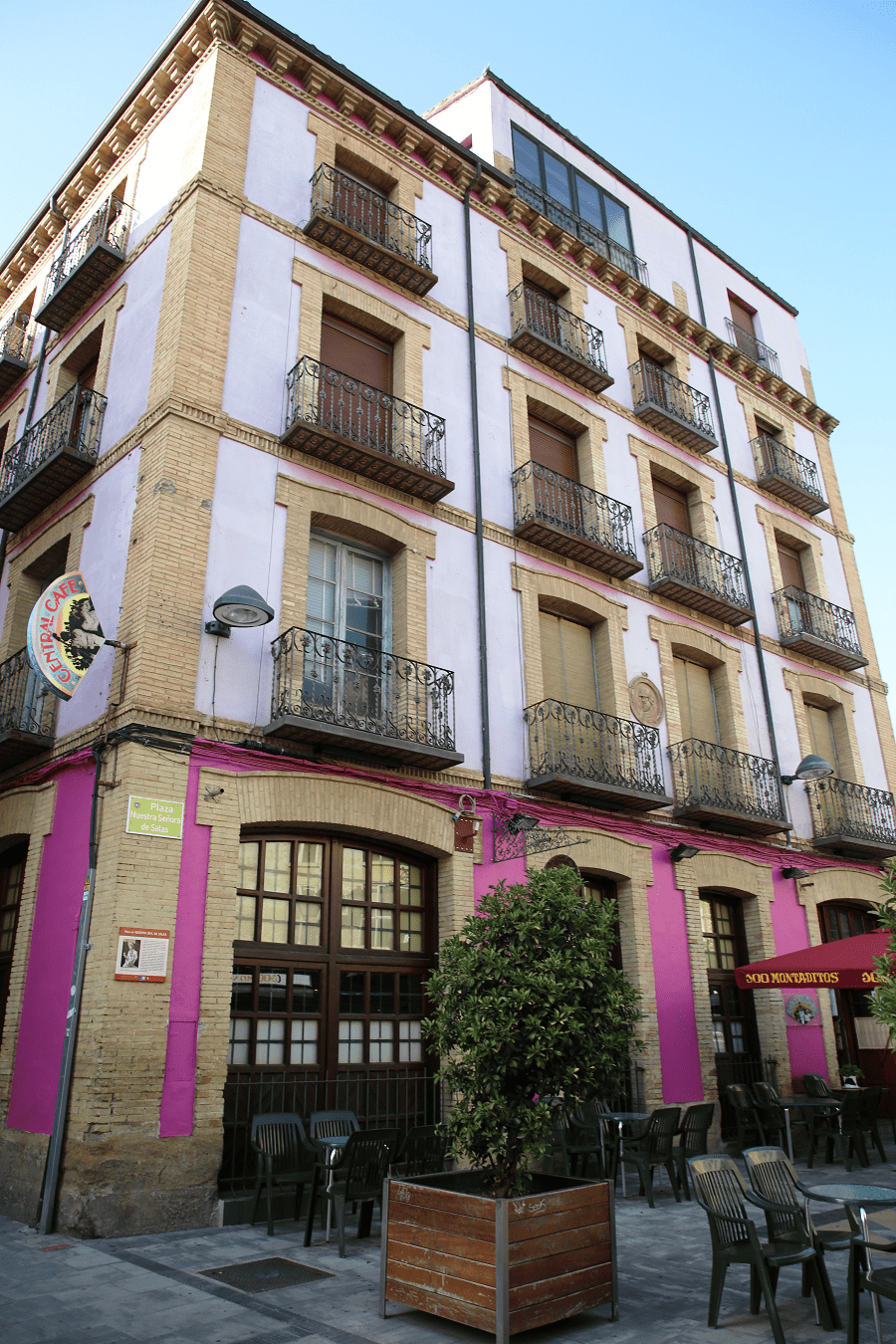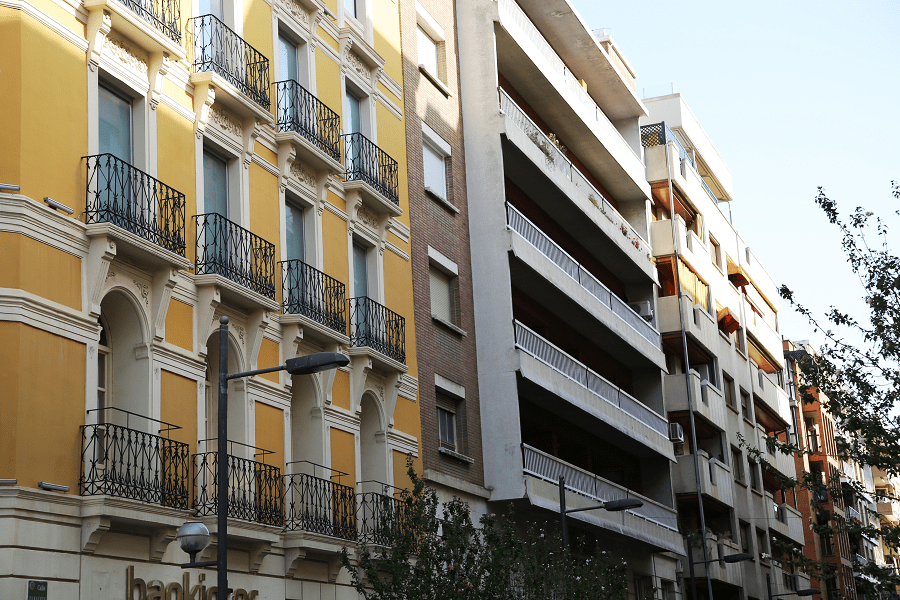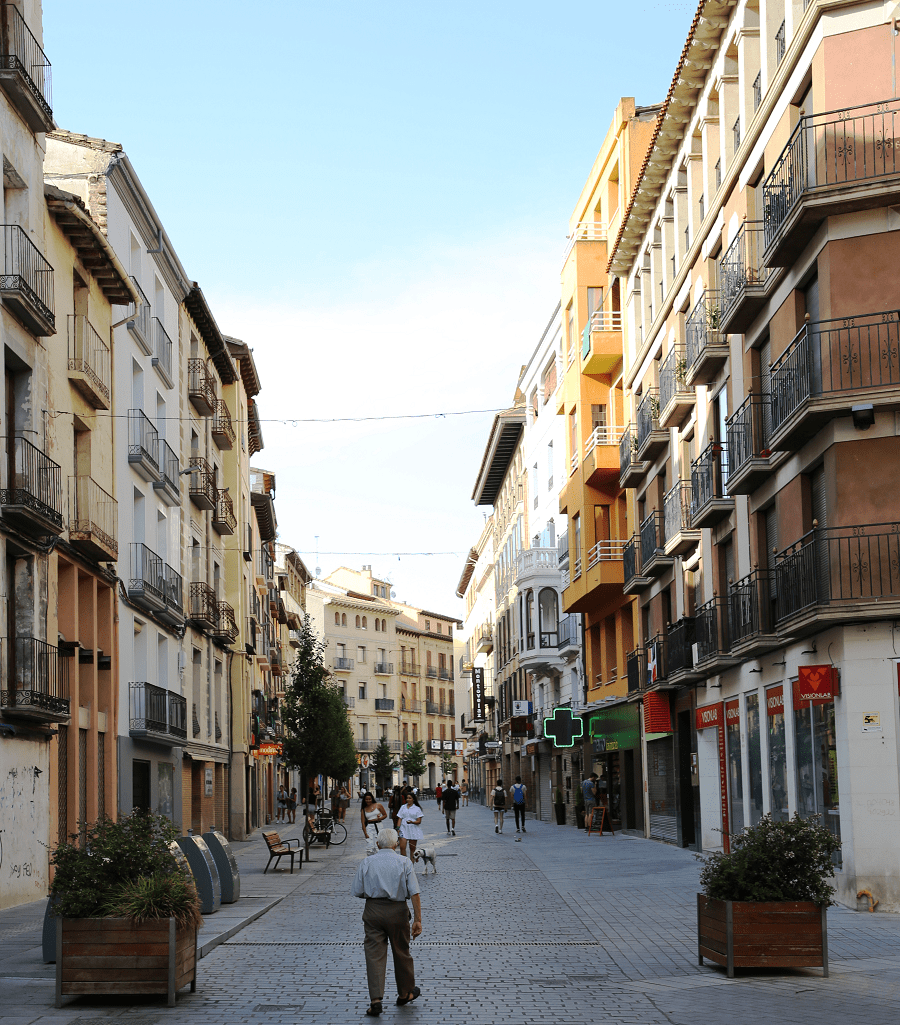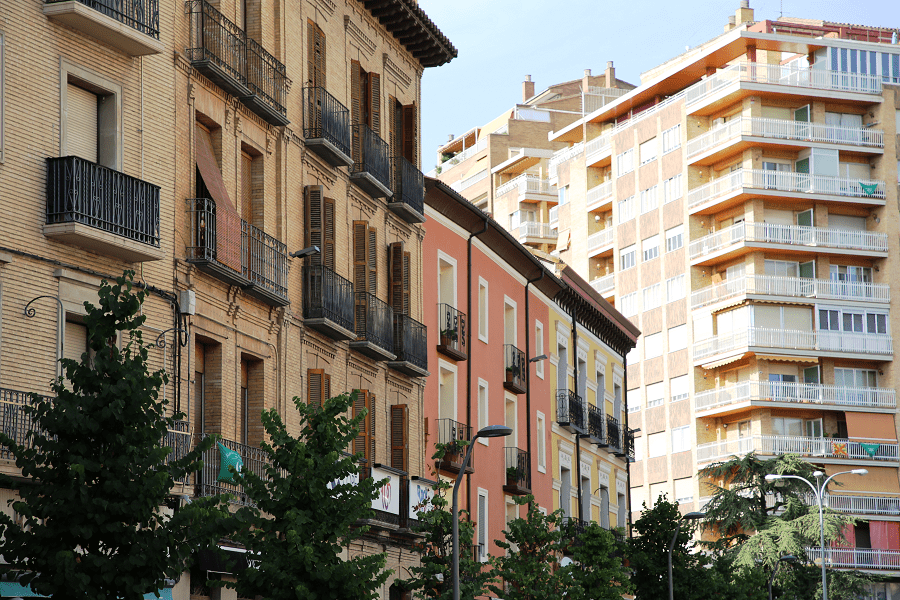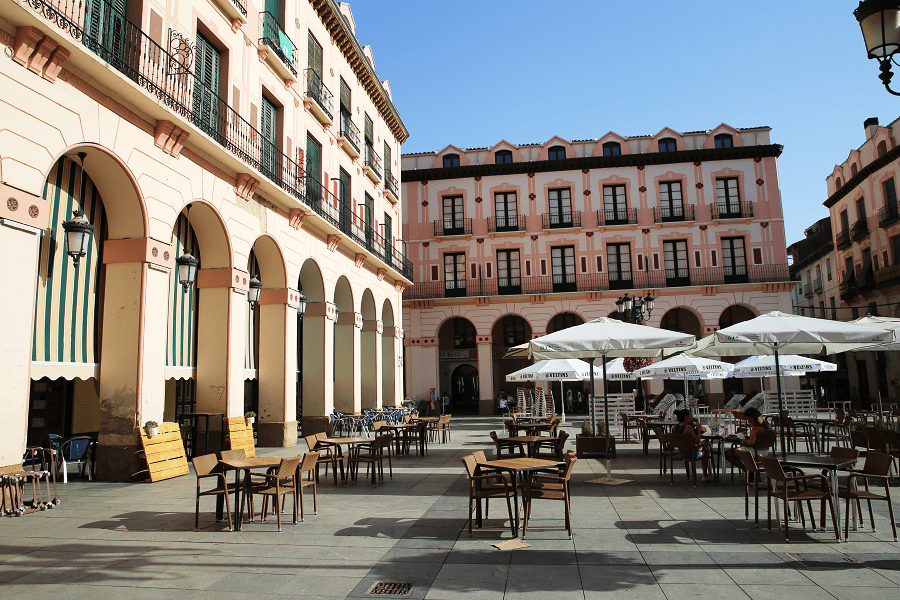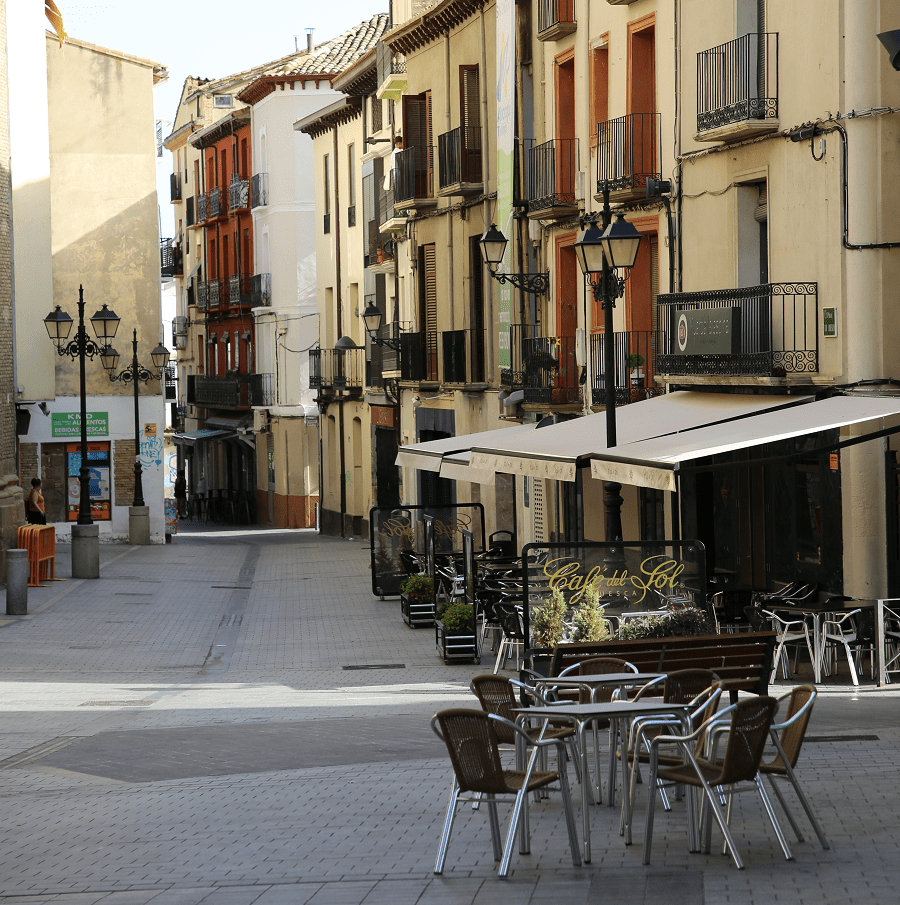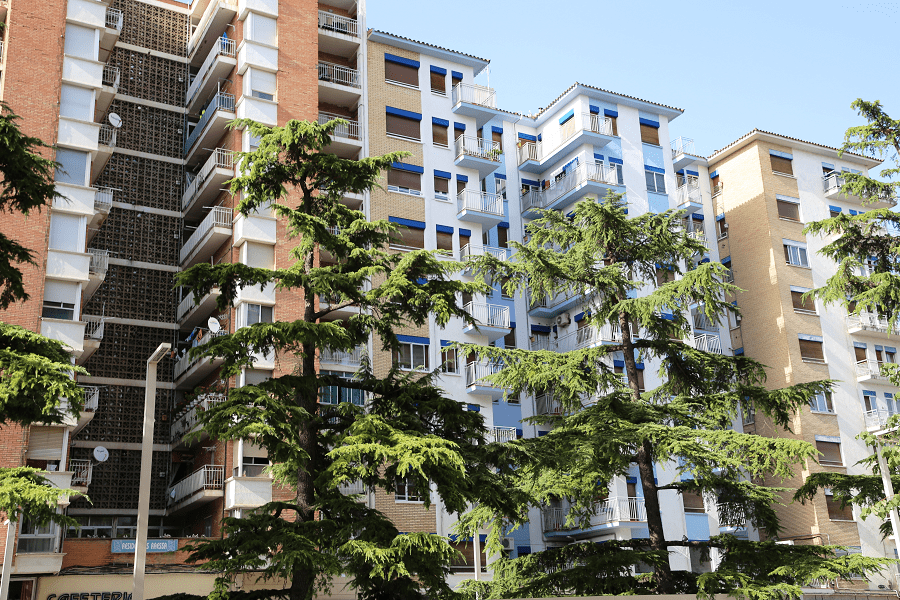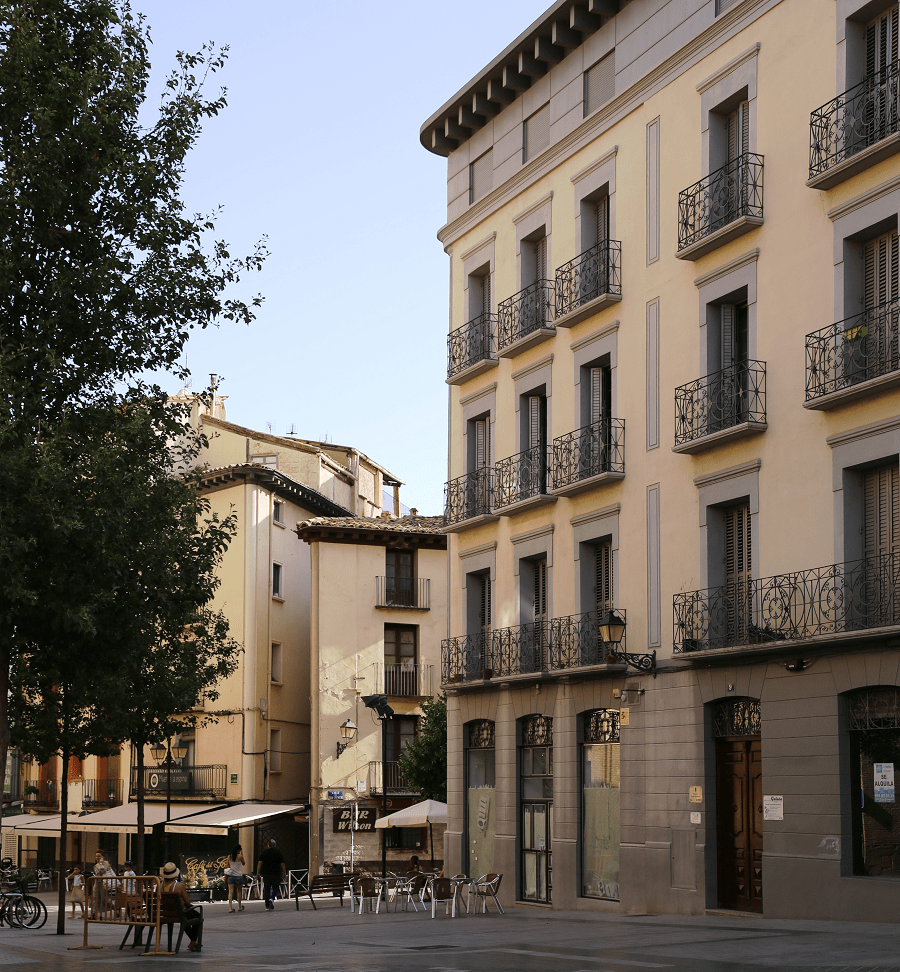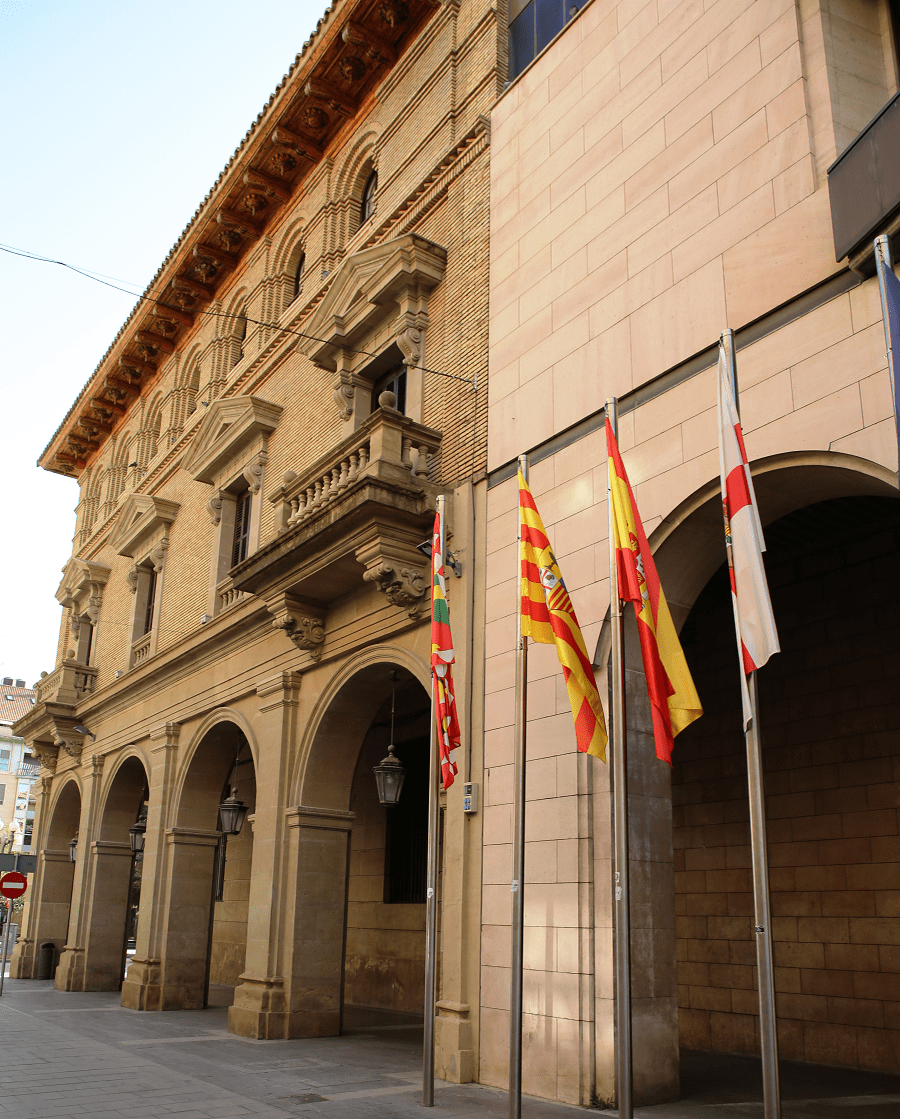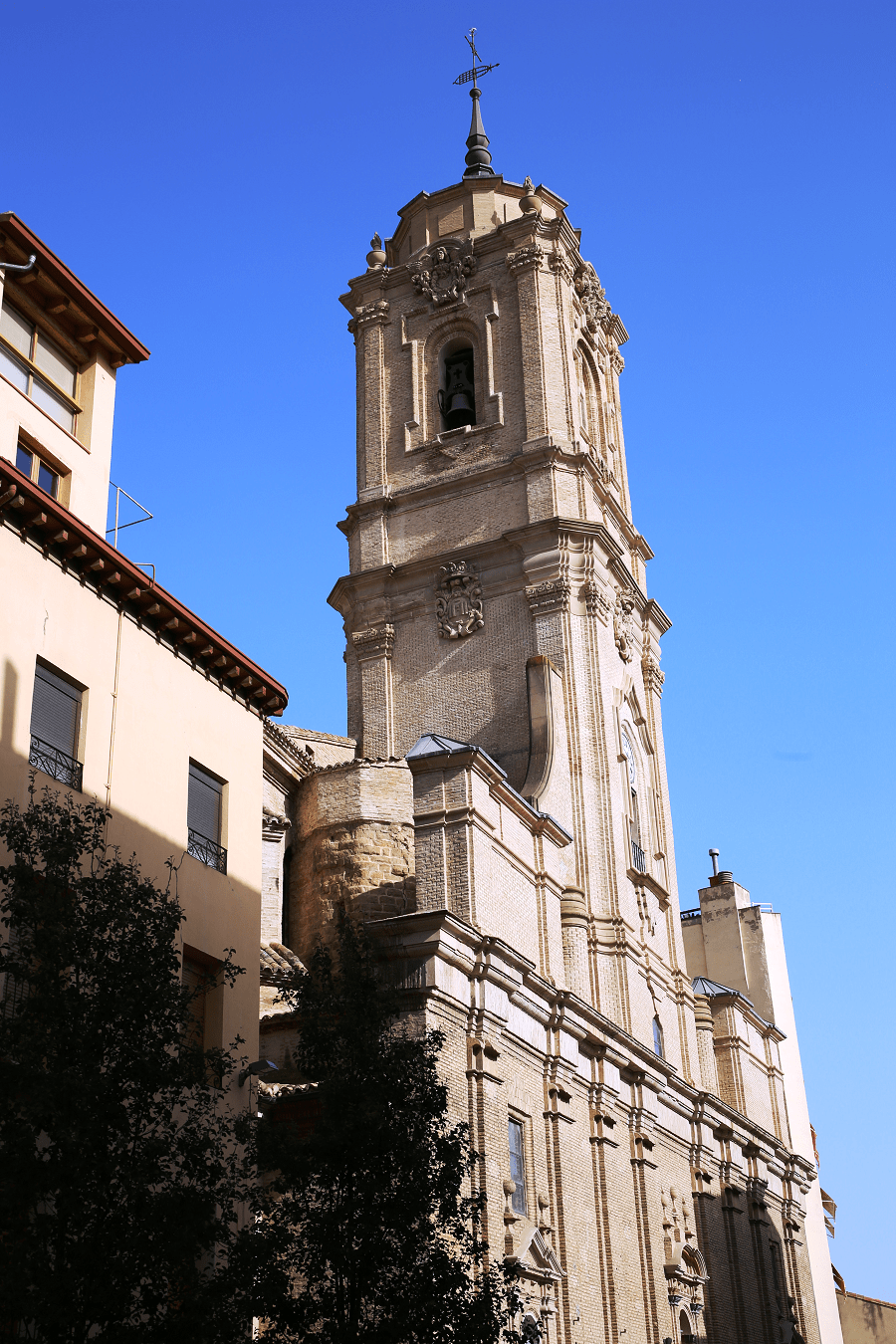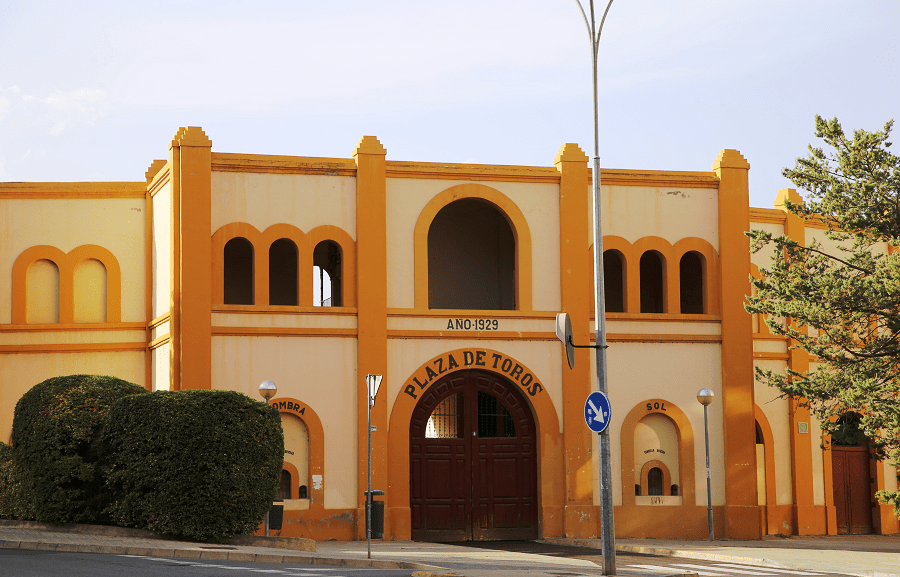Huesca (Aragonese: Uesca) is a city in north-eastern Spain, within the autonomous community of Aragon. It is also the capital of the Spanish province of the same name and of the comarca of Hoya de Huesca. The city is one of the smallest provincial capitals in Spain.
The Isuela river runs through Huesca and the Flumen river also in its surroundings, it is also located on the edge of the outer mountain ranges of the Pyrenees. From the city you can see the Sierra de Guara, whose peak reaches 2077 m of altitude. That is why it is also known as “the door of the Pyrenees”.
At present it is the second city of Aragon and the headquarters of the Provincial Council of Huesca. The economy is based on the services sector with a boom in tourism, followed by the industrial sector and with a great tradition of the agricultural sector, with crops of cereal in the outskirts of the city.
Tourism and main attractions
The monumental heritage of the city of Huesca is mainly concentrated in the Old Town and the surrounding areas.
Ramparts
Construction that surrounded the city built in the 9th century by Muslims to stop Christians from the north. The growth of the city with suburbs outside the walls from the 10th century made it necessary to build a new defensive belt made of mud. Currently it only remains standing from Joaquín Costa street to the bullring. The wall had seven gates and 100 towers, but currently only that of the Septentrión remains, remodeled according to the Gothic style.
Church of Saint Peter the Elder
Romanesque monastery from the 12th century, which includes a cloister and royal pantheon of the kings of Aragon (Alfonso I el Batallador and Ramiro II el Monje). The tower is hexagonal in plan from the late 13th century and is located in the old part of the city. It houses inside the 13th century wall paintings, the 16th century choir stalls and the Main Altarpiece from the early 17th century. It is a National Monument since 1885.
Convent of San Miguel
It is a set of the late Romanesque. It was founded by Alfonso I in 1110. The building was an important hospital, leper colony, and meeting place until the end of the 15th century. Numerous baroque-style altarpieces and the choir organ, dating from 1852, have been preserved. It is located next to the Isuela river and the San Miguel bridge. It is popularly called “Las Miguelas” because it is occupied by Carmelite nuns.
Huesca Cathedral
The cathedral dedicated to Santa María is in the Gothic style built in the 13th century and completed in the 16th century. It stands on a possible Roman temple and on the old aljama mosque of which only a horseshoe arch remains in the cloisters area. During the 17th century the building continued to be renovated, replacing medieval altarpieces, chapels and tombs with others in the Gothic and Baroque style. It was declared a Historic-Artistic Monument in 1931. It is the seat of the bishopric of Huesca and the Diocesan Museum of Huesca.
Sanctuary of Our Lady of Salas
It is located approximately one km from the city. It was rebuilt around the year 1200, at the initiative of Sancha de Castilla, widow of Alfonso II of Aragon. It is a National Monument since 1951.
Huesca City Council
It is a clear example of an Aragonese town hall from the Aragonese Renaissance. The building was built in the 16th century on the site that previously housed the council, opposite the cathedral. In it is the famous painting of the Bell of Huesca.
Huesca Museum
Built on the old Sertoriana University of Huesca, which in turn occupied part of the Palace of the Kings of Aragon, it houses archaeological remains and works of art from the entire province and especially from the Hoya de Huesca region.
Villahermosa Palace
This Gothic-style palace was built in the 14th century. Its roof has been restored where you can see a mixture of bestiary and heraldic elements. Among these figures are birds, leopards or snakes. At present it is a Cultural Center in charge of IberCaja.
Basilica of San Lorenzo
It was built on an old Romanesque temple, which was later expanded in the 14th century in Gothic style during the reign of Jaime II of Aragon. The church has a hall plan, consisting of three naves of the same height divided into four sections by cruciform pillars covered by lunettes vaults, with side chapels from the 16th and 17th centuries.
Grocery The Trust
Oldest active shop in Aragon and Spain, opened by a French family in 1871. The grocer was used for haberdashery and silk. In a few years the sale of luxurious imported products, aromatic coffees and chocolates, French liqueurs or smoked foods expanded.
Casino (Huesca Circle)
It is one of the most important examples of modernism in Huesca, it is located in the Plaza de Navarra, the nerve center of the city. Built at the beginning of the 20th century. It is symmetrical with respect to the axis of the main façade and is configured by the addition of simple geometric bodies with white facades, it also presents a castle-fortress character. For the people of Huesca it is also known as Casino.
Cuisine and the best restaurants
The meat, generally lamb, is widely used in the gastronomy of Huesca.
The traditional fresh fish comes from the rivers that cross the province, some specialties such as the ajarriero pollock are popular. Cod is prepared in various ways: ajoarriero, or baturra, with potatoes and boiled eggs, and the suggestive cod fritters.
Preparations such as chilindrón (either chicken or lamb) are popular in the province.
The most popular vegetables are endive, asparagus, as well as borage and thistle.
In the confectionery, the marzipan chestnuts, the refollau and the empanadas (stuffed with spinach or pumpkin) stand out. Also fried milk and rice pudding are popular.
There are four Michelin list restaurants in the city:
Tatau, Azara, 60 – 120 EUR • Creative Cuisine, Traditional Cuisine (one star)
Lillas Pastia, Plaza de Navarra 4, 50 – 75 EUR • Modern Cuisine, Market Cuisine (one star)
El Origen, Plaza Justicia 4, 19 – 50 EUR • Traditional Cuisine
Las Torres, María Auxiliadora 3, 40 – 60 EUR • Modern Cuisine, Traditional Cuisine
How to get to?
The Huesca airport is located between the municipalities of Monflorite and Alcalá del Obispo and is a benchmark for the Aragonese Pyrenees since there are the main ski slopes in Spain. Offers flights to Madrid, La Coruña, Palma de Mallorca and London-Gatwick.
Huesca has an intermodal train and intercity bus station inaugurated in 2001. It is a pass-through type station on the Zaragoza-Canfranc line. The station has four platforms and six tracks, two for High Speed and four for regional traffic without electrification.
AVE: The station has the lines: Huesca-Zaragoza-Delicias-Madrid-Puerta de Atocha and Huesca-Zaragoza-Delicias.
Media Distancia Renfe: Huesca-Jaca-Canfranc International Station and Huesca-Zaragoza-Delicias-Teruel–Valencia.
Distance by car:
From Zaragoza 54 min (74.1 km) via E-7/A-23
From Madrid 3 hr 59 min (394 km) via A-2 (tolls)
Main information
Area: 161 sq. km
GPS coordinates: 42°08′24″N 0°24′32″W
Language: Spanish, Aragonese
Population: 53 956
Currency: Euro
Visa: Schengen
Time: Central European UTC +1, in summer +2





